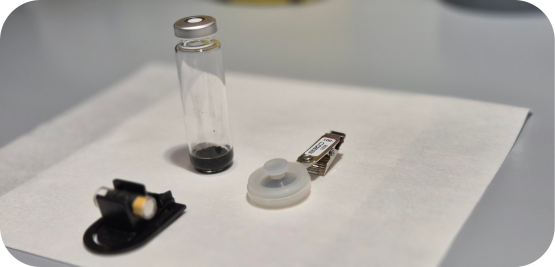Monitoring EO in Ambient Air: Badge Testing & In-Package Safety Checks
EO remains essential for sterilizing heat- and moisture-sensitive medical devices. But as regulatory expectations tighten, controlling EO in the workplace air and inside packaged product is now a critical part of safety and compliance.
Mixed Load Cycles: Optimizing Sterilization Efficiency
For small Medical Device manufacturers, mixed Load Cycles is one of these approaches, allowing different types of instruments and materials to be sterilized together within a single cycle.
Medistri’s EO Sterilization Technology: Advancing Patient Safety & Sustainability
Since the 1960s, Ethylene Oxide (EO) has been a globally recognized method to sterilize medical devices and pharmaceutical products. Its effectiveness lies in its ability to penetrate breathable packaging and reach all product surfaces, ensuring the necessary Sterility Assurance Level (SAL).
Detecting Residual IPA: Medistri’s New Validated Method
At Medistri, we continuously expand our laboratory services to help manufacturers demonstrate the safety and compliance of their products. Our latest development is a newly validated method for detecting residual Isopropanol (IPA) — a solvent that plays a central role in cleaning and disinfection processes across the healthcare and pharmaceutical industries.
Steam Sterilization at Medistri
Sterilization refers to the process of removing, killing, or deactivating all forms of life (microorganisms such as fungi, bacteria, spores, and unicellular eukaryotic organisms) and other biological agents. Steam sterilization is a widely used method for items that can withstand moisture, high temperature, and pressure. Its primary purpose is to inactivate microorganisms, ensuring a sterile product for safe use.
Centralizing Communications: Medistri’s New Customer Updates Page
At Medistri, we know that in today’s fast-moving healthcare industry, communication must be clear, transparent, and accessible. Our services are built to meet the highest standards of performance and reliability — and our communications should reflect the same.
Material Identification through FTIR Spectroscopy: Ensuring Safety and Compliance in Medical Device Development
Material identification is a cornerstone of medical device development and quality control. At Medistri, our FTIR (Fourier Transform Infrared) spectroscopy services provide manufacturers with precise, traceable material characterization to support regulatory compliance and patient safety throughout the product lifecycle.
Strengthening Supply Chain Resilience
In today’s global healthcare industry, supply chains are under pressure. Recent US trade policies underscore the importance of building resilience into every stage of the value chain. For pharmaceutical, biotechnology, and medical device companies, uninterrupted access to critical services is essential.
Medistri at CPHI Frankfurt 2025
Medistri is attending CPHI Frankfurt 2025 in Frankfurt, Germany from October 28 to 30, hosting a booth to cater client meetings, showcase its services and answer all questions.
Simplifying Lab Sample Collection Across Hungary
Medistri LabLink: Lab Sample Collection in Hungary enabling our Customers to focus on their projects.
Medistri LabLink eliminates the most persistent bottleneck in laboratory outsourcing: logistics
Built for pharmaceutical, biotechnology, and medical device manufacturers, Medistri LabLink provides direct sample pick-up in Hungary’s key industrial regions, bypassing courier delays, customs procedures, and third-party coordination.










